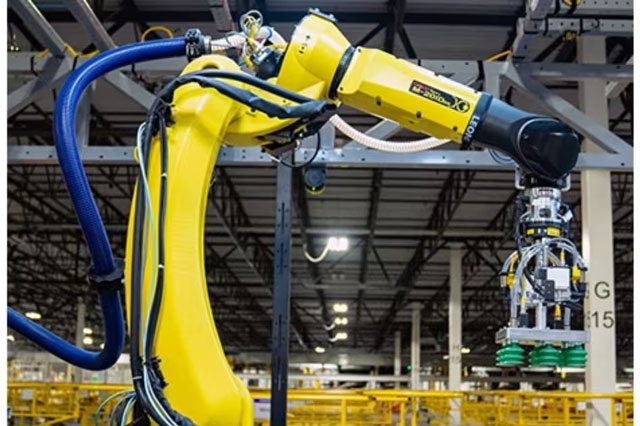Daijiworld Media Network - Washington
Washington, Oct 22: In a move that could reshape the future of the global workforce, e-commerce giant Amazon is reportedly planning to replace nearly 6,00,000 human jobs in the United States with advanced robotics and automation by 2033.
According to a New York Times report citing internal strategy documents and executive briefings, the Seattle-based tech major aims to reduce its reliance on new human hires by leveraging artificial intelligence (AI)-powered robotic systems across its warehouses and delivery operations.

The report suggests that by 2027, Amazon intends to avoid hiring around 1,60,000 new workers, with automation expected to save the company approximately 30 cents (around Rs 26) per item processed — from picking and packing to final delivery. By 2033, the company could potentially reduce the need for more than half a million workers in its US operations alone.
Documents reviewed by the publication indicate that Amazon’s robotics division is planning a complete overhaul of its warehouse technology, targeting 75% automation across key operations. However, it remains unclear whether the plan will result in layoffs of existing employees or merely a slowdown in future hiring.
Interestingly, the report also claims that Amazon executives have been instructed to avoid using terms like “robots,” “automation,” or “AI” in public discussions to prevent negative reactions. Instead, they are reportedly advised to use softer terms such as “advanced technology” or “cobots” — referring to collaborative robots that work alongside humans.
Responding to the report, Amazon spokesperson Kelly Nantel dismissed the claims as representing the views of “a single internal team,” and not the company’s overall strategy. Nantel also added that Amazon plans to hire 2,50,000 workers in the US for the upcoming holiday season, though it was not clarified whether these would be temporary or permanent positions.
The alleged automation push, if fully implemented, could mark one of the largest shifts towards robotics in the global workforce — sparking fresh debate over the future of human employment in the age of artificial intelligence.